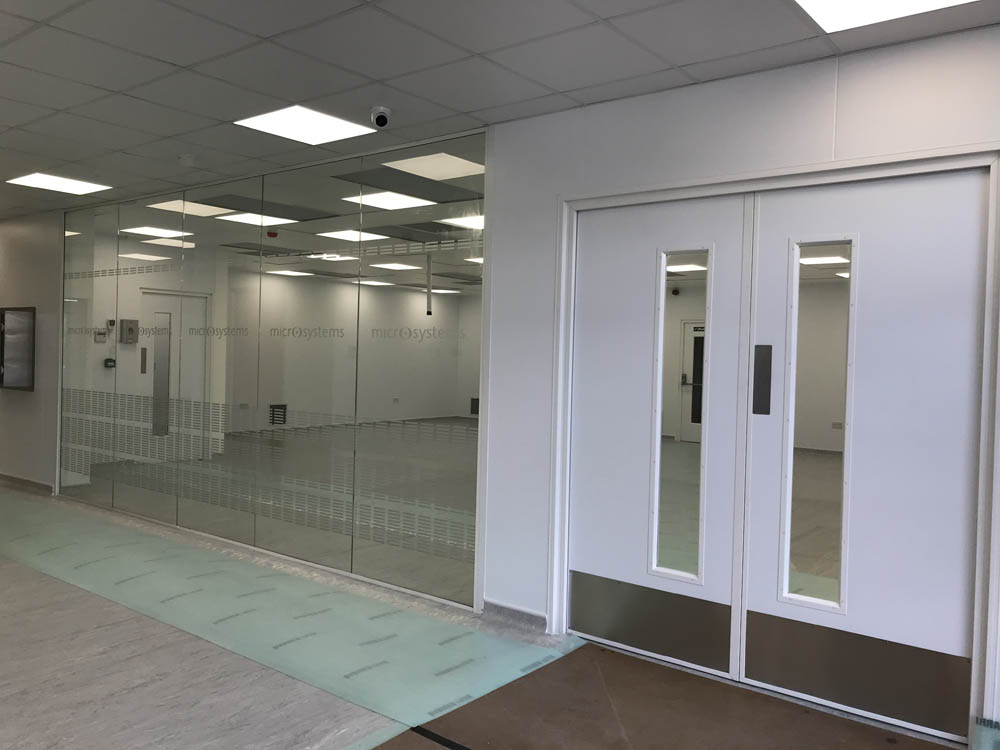How Temperature and Humidity Affect Pharmaceutical Production (And How to Control Them Effectively)
Temperature and Humidity limits in pharmaceutical facilities raise a number of questions, such as appropriate alarm limits, acceptable durations for conditions at alarm level and responsible energy use. Understanding the reasons for temperature and humidity requirements in pharma manufacturing is important for deciding limits and meeting compliance with GMP regulations. This article explains how temperature and relative humidity during manufacturing may affect drug stability and the effectiveness of manufacturing processes.
Temperature and relative humidity are critical factors in cleanroom design to ensure compliance. However, GMP regulations in the UK are unclear, as investigations into the impact of these environmental factors on each possible product have not taken place in sufficient depth to provide adequate guidance.
Which Cleanroom Areas Require Temperature Controls?
- Aseptic operations areas: EU regulations indicate that ambient temperature and humidity in clean areas “should not be uncomfortably high because of the nature of the garments worn.”(EudraLex 4 Annex 1.73)
- Long-term storage areas: degradation is known to occur more rapidly over time in inappropriate environments (Fagan, 2025)
Impacts of Temperature and Relative Humidity during Pharmaceutical Manufacturing Processes
Assessing the temperature required for manufacturing pharmaceutical products depends on the nature of the product and manufacturing operations, as well as the quality of cleanroom overalls.
1: Impact on Personnel
The temperature of the cleanroom environment is ordinarily set at 20oC to prevent staff discomfort. Cleanroom gowning required in GMP A and B grade cleanrooms is designed to minimise airflow from the body outwards, which has an insulating effect.
If operators overheat, they may sweat, or repeatedly need to exit the environment to cool down, raising the risk of contamination. As such, common practice is to provide lower temperatures with higher levels of gowning.
- For operators with little to no gowning (street clothes), set temperature at 22oC.
- For ISO 8 Environments, set temperature at 20oC
- For ISO 7 environments, set temperature between 17oC – 18oC
Optimal cleanroom temperatures are first defined by comfort for operators.
2: Impact on (and of) Equipment
Some manufacturing equipment in cleanrooms can impact the internal temperature. Installations should integrate machine venting and cooling within the overall cleanroom HVAC system, to avoid disrupting air flow, quality and temperature.
While sensitive equipment can overheat if conditions are inappropriate, the ambient temperature would have to be particularly high for this to occur, and other risks would be incurred before a mechanical failure.
Install machinery cooling and venting systems carefully.

3: Impact on Product
There is limited data on the effects of temperature and humidity on specific pharmaceutical products in the short term. Moisture-sensitive materials such as powdered products should not be exposed to relative humidity higher than 30% in any case, as this can lead to water sorption and physical changes to the consistency of the product.
Product Storage
Most medicines may be stored at temperatures up to 25oC, though some require more specific conditions.
Long-term exposure to extreme heat and high relative humidity is known to cause degradation in a wide range of products. Special consideration should be made for injectables and biologics such as vaccines, peptides and nucleic-acid therapies.
For example, a recent study showed that human insulin in powdered form stored above 25oC / RH 33% saw degradation of amino acids that would impact the therapeutic effects within 14 days. (Fagan, 2025)
Many products require refrigerated storage between 2-8oC, but can degrade irreversibly by brief periods at subzero temperatures.
Maintain temperatures and humidity at the appropriate level for the given product or material in storage areas.
4. Impact on Sterility
Temperature and humidity control also prevent microbial growth in both long-term storage and processing areas, as the growth rates of common microbes peak at particular temperatures.
- Psychrophiles such as Penicillium have a range from approximately – 5oC to + 20oC.
- Mesophiles (most human pathogens) can tolerate ranges from 15oC to 40oC, with an optimal growth rate around 36oC.
- Mould propagation is also more viable at temperatures above 35oC.
Moisture due to excess humidity also provides an environment for microbial growth.
Electrostatic Discharge (ESD)
With extremely low humidity, static electricity can build up, causing particles to cling to surfaces. An optimum relative humidity of 35-40% in cooler air temperatures can prevent ESD.
Maintaining temperatures at 20oC minimises bacterial growth in operating and storage areas.
5. Impact on Compliance
EU GMP regulations state that:
“Lighting, temperature, humidity and ventilation should be appropriate and such that they do not adversely affect, directly or indirectly, either the medicinal products during their manufacture and storage, or the accurate functioning of equipment.”
(EudraLex 4.1.3.3)
The optimal temperature and humidity for the storage of each product should be determined during development and licensing. For most products, this is between If these conditions are not met, the production facility could be in breach of these regulations, as the MHRA
Precision-Engineered HVAC Systems Provide Environmental Control
During cleanroom installation, we provide precise HVAC systems designed to the needs of the facility. HVAC includes air conditioning, which controls temperature, humidity, positive air supply, filtration and airflow. Accurate temperature and humidity controls are vital for pharmaceutical cleanrooms to remain compliant and successful.
Every cleanroom benefits from HEPA filtration: High Efficiency Particulate Air filters used in storage and quarantine areas to ensure cleanliness to the correct ISO class. These filters are the main component in our air handling units (AHUs) and are capable of capturing dust particles as small as 0.3 microns.
Airology’s Expertise in Pharma HVAC Solutions
As cleanroom specialists, we’ve provided bespoke cleanroom design and installation since 1996, continuously learning as technology develops. Whether setting up a new facility or upgrading an existing one, the expertise we bring to the table has supported many pharmaceutical companies to grow and produce effective, compliant medicines and supplements for the UK market.
View our previous work on Pharmaceutical Cleanrooms, or contact us for a free, accurate quote.




